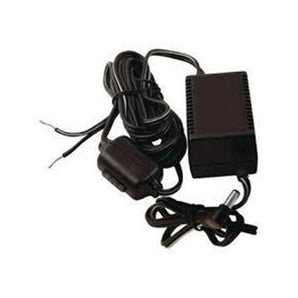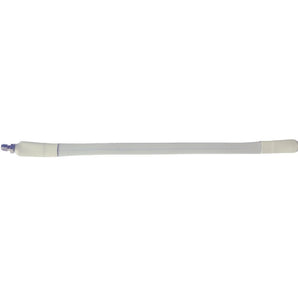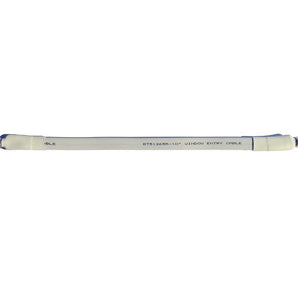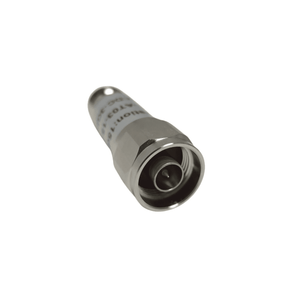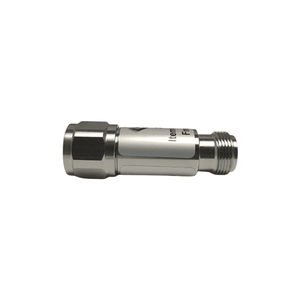General Signal Booster Questions
What factors contribute to me having a weak signal?
- A cell phone signal booster is an ICASA and NRCS Approved electronic device that improves existing cellular signals: 2G, 3G, and 4G LTE.
- They work with all cellular devices (smartphones, tablets, hotspots etc.) on all major South African carriers (MTN, Telkom, Vodacom, Cell C).
- If you generally have weak to good signal outside your home or building, but poor signal inside, then a cell phone signal booster can definitely improve your coverage and signal strength.
What factors contribute to me having a weak signal?
Weak signal is caused by 5 main factors. Just one or any combination of these factors can greatly affect your cellular coverage.
- Cell Tower Distance
- Outside Interference: trees, mountains, hills, high structures, etc.
- Building Material: metal, concrete, low-e glass, thick external walls, etc.
- Internal Interference: drywall, wood, plaster, metal, electronics, etc.
- Nature/Weather: rain, snow, thunderstorms, wind.
How do I measure my cellular signal? (dB gain)
The following blog on our website explains how to find signal strength for iPhone and Android phones: How to find signal strength on your phone
How does a Cell Phone Signal Booster work?
A cell phone signal booster works by doing 3 things with 3 easy-to-install parts:
- The Outside Antenna pulls in weak 3G & 4G LTE signal.
- The Amplifier boosts signal up to 32X.
- The Inside Antenna rebroadcasts signal throughout area in need.
What types of Cell Phone Signal Boosters do you offer?
We offer a versatile array of cell phone signal boosters tailored for every need and setting. Whether it's enhancing connectivity in your home, ensuring constant communication in your vehicle, or boosting signal strength in an office environment, our range covers it all. From compact, easy-to-install units ideal for small spaces and cars, to more powerful solutions designed for whole-home or large office coverage, our products are scalable and adaptable to provide you with the best possible signal no matter where you are.
Do Cell Phone Boosters need an Internet connection?
Nope. Signal boosters simply amplify your existing 3G & 4G LTE signal.
Are there any monthly fees?
Absolutely not. You buy it, it's yours for life.
Does it boost wifi signals?
Unfortunately, signal boosters do not improve wifi signals, only cellular signals such as 3G & 4G LTE for most major South African Networks.
Do I need to register my cell phone signal booster with my service provider(s)?
Yes, it's highly recommended to let your mobile network know you are using a signal booster as a courtesy and in case of liability should your booster affect the network tower in any way (which is highly unlikely with today's automatic gain control signal boosters).
Can I use my in-building solution in an outdoor setting?
Cell phone boosters are made to work indoors where radio waves are able to bounce and reach their destination (i.e. better signal for your phone).
They're not made to work outdoors since it would lead to open air path loss meaning you'd have to be RIGHT next to the antenna since the boosted signal would disappear without being "contained" inside a home or car.
Can I use my in-building solution in a vehicle (and vice versa)?
Yes and no. Technically, a home booster and car booster are made for their specific purpose. However, there is a home & office accessory kit that allows for cars boosters to be used indoors (as a desktop range booster). And some home boosters have been retrofitted for stationary use.
We generally recommend following the manufacturer instructions & recommendations.
What is the difference between a 3G booster and a 4G LTE booster?
3G is generally talk, text, and 3G basic internet. While 4G comprises of 3G & 4G high-speed internet for multimedia, apps, and data-heavy streaming.
So a 3G booster will only do talk, text, and basic 3G data, while a 4G booster will do talk, text, 3G & 4G data. It's recommended to go with a 4G booster since it is more future-proof.
What is the difference between a 75 Ohm system and a 50 Ohm system?
A 75 Ohm system is generally a consumer unit that uses RG-6 cable with F-connectors (the coaxial cable and port found in every standard cable/satellite/internet box) with typical cable run up to 15 meters.
A 50 Ohm system is generally an enterprise unit that uses Bolton400 cable with N-connectors with a typical cable run up to 30+ meter.
As a general rule of thumb, any typical house (500-1000m2) can use a 75 Ohm system and see good results.
For anything over 2000m2 coverage, it's best to go with a 50 Ohm system since 50 Ohm systems and cables are better than at handling signal loss with long cable rules.
Are signal boosters legal in South Africa?
Yes. Our signal boosters are ICASA-approved for legal use in South Africa. For commercial or enterprise installations, registration with your network provider may be required. Always ensure you're using certified products to stay compliant. As the sole distributor for Africa, we also have type approval for multiple countries across the continent.
Do I need to register my signal booster?
Some mobile networks require registration for commercial-grade signal boosters to avoid interference. For home and vehicle kits, registration is typically not necessary. We’ll guide you if registration is needed for your system.
Can I use a booster with my 4G router or mobile hotspot?
Absolutely. Boosters can amplify signal to 4G LTE routers, MiFi units, or in-car Wi-Fi. Just ensure the router uses a SIM and cellular connection (not landline internet) and that antennas are placed near the device.
Do cell signal boosters reduce phone battery drain?
Yes. A stronger signal means your phone doesn't need to work as hard to stay connected, which results in improved battery life.
General Installation Questions
Can I install this product myself? (building & vehicle)
For consumer products: yes, without a doubt. Consumer cell phone signal boosters do not require professional installation. They're easy to set up. Although it's perfectly fine to hire a local handyman, installer, or any profession that deals with running cable.
Learn more through our videos page on installation: https://www.boltontechnical.co.za/pages/video-tutorials
For commercial products: it's highly recommended to consult with a professional installer with an understanding of running cable, signal loss, and floor plan analysis. Learn more: https://www.boltontechnical.co.za/pages/design-and-installation
How long does it take to install? (building & vehicle)
For typical home booster, it takes 30 minutes to an hour depending on your level of handiness and also cleanliness.
For typical car boosters, no more than 5 to 15 minutes depending on the unit.
Commercial boosters require professional installation and can take 1-2 days up to a few weeks depending on the size and scope of the project.
What are the steps required in a typical process of installation? (building & vehicle)
In general, installing a cell phone signal booster is a 3 step process.
- The Outside Antenna is installed high on the roof of the home, building, or car.
- The Amplifier is installed at an easy-access location. For homes, in the closet, behind the shelf, etc. For cars, underneath the seat.
- The Inside Antenna is installed in an area in need.
Learn more with our videos: Video Tutorials
Do you offer any professional installation services? (building & vehicles)
Bolton Technical provides nationwide installation service for enterprise and industrial solutions.
Learn more: www.boltontechnical.co.za/pages/design-and-installation
How can I find the optimal placement for the antennas and booster(s)? (building & vehicle)
Finding the best place to install your outside antenna is simple process.
- First find dB readings on your phone
- Walk around the outside perimeter of your home or building (roof if possible)
- It takes dB values to refresh so pause and hold every 30 seconds for each spot to get accurate readings.
- The number closest to the number 0 is the best spot to install the antenna.
Learn more how to find dB readings on your phone: How to find your nearest cell tower
For the inside antenna, it's best to install in the area you will be spending most of your time using your cell phone and other cellular devices.
For the amplifier, it's best to install in a an easy-access and well-ventilated place that doesn't collect much heat such as a shelf, wall, or closet.
What’s included in your warranty, and what voids it?
We offer a 2-year warranty covering manufacturing defects. The warranty is void if the product is tampered with, physically damaged, installed incorrectly, or exposed to water or lightning without proper surge protection.
Where should I place the outdoor antenna?
Place it where the strongest signal is available, usually on the roof or outside wall facing the nearest cell tower. Use a signal meter or phone in field test mode to find the best spot before mounting.
Do I need to ground my outdoor antenna?
Yes. Grounding the outdoor antenna using a lightning surge protector is strongly recommended to protect your equipment and building from electrical surges.
Can I extend the included cables if I need more reach?
Yes, but adding extra length can cause signal loss. If you need longer runs, use low-loss cables like Bolton 400 or Bolton-600 and avoid cheap coaxial extensions.
What tools will I need to install the system?
Basic tools like a drill, wrench/spanner, ladder, and possibly cable clips or zip ties for cable management. A signal meter or your phone in field test mode is helpful for positioning.
Can I move the booster after it’s installed?
Yes. Boosters are not hardwired into your building. You can relocate it if you move homes or offices, though you may need to adjust cable runs or antenna positioning.
How do I know if my installation was successful?
After installation, check signal strength using dBm readings (not just bars). You should notice fewer dropped calls, faster data, and more reliable service throughout the covered area.
General Accessory Questions
What is a Lightning Surge Protector and why do I need it?
A lightning surge protector is a recommended accessory for any home and building Wilson weBoost cell phone signal booster.
Placed between the outside antenna and amplifier, should lightning strike your outside antenna, the lightning surge protector will discharge any power surge, saving you hundreds if not thousands of dollars of equipment.
And when paired with a quality surge protected power strip of at least 1000 Joule rating, you'll have the ultimate peace of mind especially if you live in an area with frequent thunderstorms since tall metal objects (like the outside antenna) have a higher tendency to be magnets for lightning strikes.
What is the difference between a Yagi outside antenna and an Omni outside antenna?
Both yagi and omni are outside antennas that pull in your existing 3G & 4G signals before sending it off to the amplifier to be boosted.
In general, omni antennas are all-around performers used in corporate offices, because they pull signal from a 360-degree field, which usually helps when boosting multiple carriers with cell towers in different locations. They generally are long rod-like cylinders.
Directional (yagi) antennas are specialized performers that pull in signal from a 45-90 degree directional field. The ability to focus on a narrower field allows it to reach farther than the omni and pull in more signal. However, unless all carriers are within that directional field, the yagi antenna tends to only boost one carrier.They generally look like an arrow tip or a pirate flag (ahoy, mateys!).
So, directional antennas are very popular with people in remote, rural areas or any place with terrible reception.
Learn more: https://www.boltontechnical.co.za/blogs/antennas/omni-directional-antennas-vs-uni-directional-yagi-antennas
What is the difference between a Panel inside antenna and a Dome inside antenna?
Both panel and dome are inside antennas that provide boosted signal inside the building.
A panel antenna is wall-mounted with a directional broadcasting angle of 45-70 degrees. This means farther reach and also preference for those closest to the antenna. Great for hallways and priority areas.
A dome antenna is ceiling-mounted with a 360 degree broadcasting pattern. This is for general use and a horizontal equal-signal broadcast in all directions.
Differences between exterior antenna offerings for vehicle and M2M units?
For vehicle and M2M outside antennas, there are many types for different uses:
- Magnet mount car antennas: easy-install 4"" low profile and 12"" performer
- NMO (non-magnetic) antennas: permanent installations
- Caravan/Bakkie/Truck antennas: rugged performers on the road
- Marine antennas
Differences between vehicle interior antenna offerings?
For vehicle and M2M inside antennas:
- Low-profile car antenna: for most cars, sedans, and SUVs.
- Desktop antenna: for Caravans & boats (short range)
- Panel antenna: for Caravans & boats (medium range)
- Blade Antenna: for 4x4, overlanders, caravans, SUVs, (long range)
What are the types of cables you offer? How do I figure out which ones I need?
All signal boosters are sold in complete kits with the right type and length of cable for the application. Please refer to your product's spec manual to find the type and length of cable.
Typical cables for home:
- Bolton400. Max run: 305 meters
- RG-11. Max run: 22 meters
- RG-6. Max run: 15 meters
Typical cables for vehicles:
- RG-174. Max run: 1.8m
- RG-58. Max run: 6m
Bolton Technical is not just limited to these cables. We are able to accommodate for unique situations.
Learn more: https://www.boltontechnical.co.za/blogs/news/understanding-coaxial-cables-the-complete-guide
How do I figure out the optimal length for my particular configuration? (building & vehicle)
All signal boosters are sold in complete kits with the right type and length of cable for the application. Please refer to your product's spec manual to find the type and length of cable.
Typical cables for home:
- Bolton400. Max run: 305 meters
- RG-11. Max run: 22 meters
- RG-6. Max run: 15 meters
Typical cables for vehicles:
- RG-174. Max run: 1.8m
- RG-58. Max run: 6m
Bolton Technical is not just limited to these cables. We are able to accommodate for unique situations.
Learn more: https://www.boltontechnical.co.za/blogs/news/understanding-coaxial-cables-the-complete-guide/
What is a splitter and which types of configurations will require it?
A splitter is an accessory that allows for additional inside antennas.
Typically, a splitter is used to take one cable run and split it into two, three, even up to four cable runs, which means one line is able to do 4 inside antennas.
However, this also means that the signal strength is also being split across the cable runs and antennas. So it's highly dependent on having enough boosted signal to make sure there's enough broadcasting range for all additional inside antennas.
What is a tap and which types of configurations will require it?
A tap is an accessory that allows for additional inside antennas.
Like a splitter it allows for splitting one cable run into multiple cable runs and antennas.
Unlike a splitter, a tap allows for asymmetrical signal strength cable runs. This means instead of splitting the signal strength equally, one output will perform better than the other(s).
This is useful for instances when giving preference to priority areas in need of coverage or longer cable runs to offset signal degradation.
It's important to remember that a tap or splitter is highly dependent on the quality of the boosted signal.
How do I know whether or not my particular configuration will require additional accessories on top of the full kit offered?
In general, what's in the box is able to do what's advertise in the product description.
The only time you would need additional accessories is for specific cases such as having two priority areas on the opposite end of the building (splitter & additional inside antenna), living in a place with frequent thunderstorms (lightning surge protector), wanting to boost all networks (combiner, yagi antenna, and omni antenna), etc.
If you have a unique situation, contact our support team at (sales@boltontechnical.co.za)
Can I use multiple indoor antennas with one booster?
Yes, with a splitter, you can distribute signal to up to 4 indoor antennas for wider indoor coverage. Just note that splitting signal may reduce gain, so your system must be powerful enough to support it.
Can I boost signal in an outbuilding or detached garage?
Yes. This can be done by running a long coaxial cable from your amplifier to a second indoor antenna in the outbuilding. You'll need a strong booster, high-quality low-loss cable, and proper planning to maintain signal strength.
How do I maintain outdoor antennas?
Wipe down outdoor antennas periodically to remove dust, debris, or bird droppings. Avoid physical damage and check for rust or loose mounts. Ensure antennas remain pointed in the correct direction.
General Trouble Shooting
How do I test if my booster is working properly?
Beyond LED indicators, the best way to test performance is by checking your phone's signal strength in Field Test Mode (dBm readings) before and after installation. Apps like “Network Cell Info Lite” can also help track real-time signal improvements.
Why am I not receiving a boosted signal for the advertised coverage area?
Under best case scenarios, a signal booster is able to provide advertise coverage. However, for the majority of people, most are not under best conditions.
Several factors such as outside signal strength, building material, internal interference, and even weather can affect the boosted signal coverage.
It's best to learn about dB readings and understanding signal strength in numerical values than bars: How to find your nearest cell cell tower
What do the lights on the booster signify? What does the messages on the screen signify?
SOLID COLORS:
Green: Everything is working fine. Orange: Too much signal is coming in from the outside. Solution: Point or move outside antenna away from the source. Red: The outside antenna is pulling signal from the inside antenna causing oscillation. Solution: Put more distance between the two or shield them from each other.
FLASHING COLORS::
Green/Orange: It's working but at reduced power because the outside antenna is pulling in too much signal. Point or move outside antenna away from the source. Green/Red: It's working but at reduced power because the outside antenna is pulling in signal from the inside antenna. Put more distance between the two or shield them from each other.
Remember to unplug and plug in the amplifier to restart!
How do I fix an orange light?
LIGHTS:
Green: All is good. Solution: Pat on the back.
Orange: Too much signal is coming in from the outside. Solution: Point or move outside antenna away from the source.
Red: The outside antenna is pulling signal from the inside antenna causing oscillation. Solution: Put more distance between the outside and inside antenna or shield them from each other.
Remember to unplug and plug in the amplifier to restart!
How do I fix a specific error?
Other than lights, antenna placements, and rebooting your amplifier (https://www.wilsonamplifiers.com/support/general/troubleshoot-lights-messages), it's best to refer to your product manual or contact customer support at (sales@boltontechnical.co.za)
Where can I find my product manual?
You can find all product manuals for your cell phone signal booster here:
What should I do if signal fluctuates during storms or network congestion?
What happens to signal during storms or bad weather?
Heavy rain or storms may temporarily reduce cellular signal strength. Your booster will continue to amplify whatever signal it can receive, but performance might dip slightly until weather conditions improve.
I’m still getting dropped calls. What can I do?
Ensure your outdoor antenna is aimed at the strongest signal source, all cables are securely connected, and there's enough separation between antennas. Try repositioning the indoor antenna for better coverage.
The booster was working, but now I have no signal. Why?
This may be due to:
- a loose cable connection
- power loss or unplugged power supply
- Antenna damage from weather
- Network outages from your mobile carrier
Double-check all components and test again.
My booster is overheating - what should I do?
Ensure your amplifier is in a well-ventilated area, not enclosed in a cabinet or exposed to direct sunlight. Overheating may lead to shutdown. If it persists, contact our support team for further assistance.
Why is my data speed still slow?
Check the signal strength in dBm. Boosters amplify existing signal, so if the outside signal is extremely weak (e.g., below -110 dBm), even a boosted signal may struggle. Try improving your outdoor antenna's positioning or upgrading the antenna type.
The booster is making noise - is that normal?
No. Signal boosters are passive devices and should operate silently. If you're hearing noise from the unit, it may be a faulty power supply or internal component. Please contact support.




